Integration, Analysis and Visualization of Large Size Multi-Modal 3D Medical Imagery
This project is a joint collaboration between the College of Applied Life Studies (ALS) and the National Center for Supercomputing Applications (NCSA) at the University of Illinois at Urbana-Champaign. The project addresses the problems of understanding neuron-anatomical models of song birds by integrating, analyzing and visualizing large size multi-modal 3D medical imagery.
The joint research of NCSA and ALS combines the computer science and bio-medical expertise, and leverages magnetic resonance (MRI), diffusion tensor (DTI) and immuno-histological imaging modalities, as well as advanced image processing algorithms not only to understand neuron-anatomical models of song birds but also to test hypotheses about efficient diagnoses from multi-modal imagery.
High Resolution MRI Microscopic Neuro-Imaging Studies and Voice Disorders.
To fully understand the Spasmodic dysphonia, a neurologic voice disorder and to evaluate various treatment methods an animal
model to study the motor control sound production would be of great assistance.
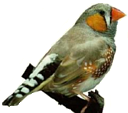 One potential small animal candidate is the songbird and among these one of the most relevant candidate the zebra finch
(Taeniopygia guttata). The zebra finch is an ideal animal model since the auditory behavior, the neural
pathways, the genomic profile, and the neural pathways for sound generation are similar to humans.
One potential small animal candidate is the songbird and among these one of the most relevant candidate the zebra finch
(Taeniopygia guttata). The zebra finch is an ideal animal model since the auditory behavior, the neural
pathways, the genomic profile, and the neural pathways for sound generation are similar to humans.
Results of our work of mapping and visualizing in three dimensions (3D) the vocal production circuitry of the zebra finch are shown here. We used Magnetic resonance imaging (MRI) microscopy with 3D diffusion tensor weighted fiber tracking. High resolution MRI images of the cadaveric zebra finch brain and 3D diffusion tensor weighted fiber tracking imaging were fused with serial cyto-histological sections of the complete brain of a male and female zebra finch.
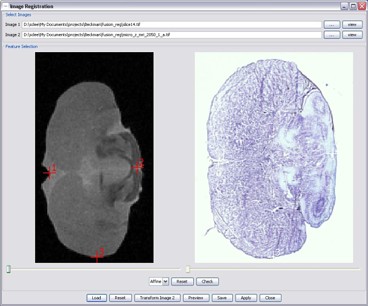
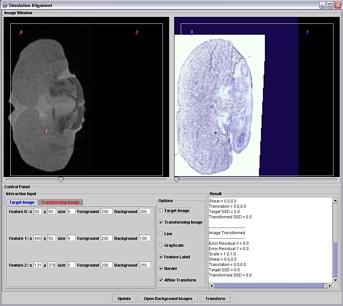
Figure 1. Integration of 2D frames obtained from MR Imaging and Immuno-Histological Imaging modalities (first image) using affine/rigid transformations and manual selections of control points (second image).
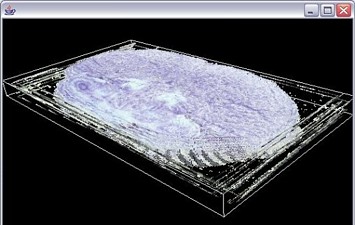
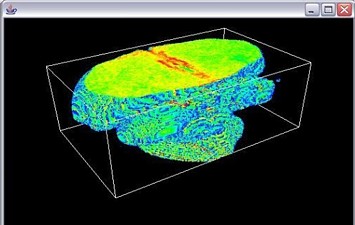
Figure 2. Visualization of 3D volumes. Left: 3D volume formed by integrating multiple cross-sections obtained from Immuno-histological imaging modality with the NIssl stain. Right: pseudo-colored visualization of a 3D MRI volume.
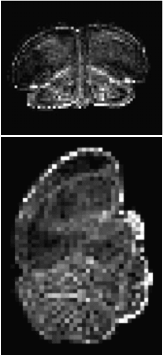
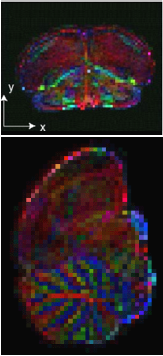
Figure 3. Fractional anisotropy (FA) MRI images (right) and Color Coded diffusion tensor imaging (DTI) which allows to measure and quantify local anisotropic molecular diffusion processes (left).
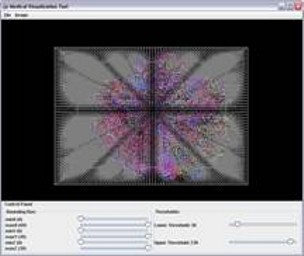
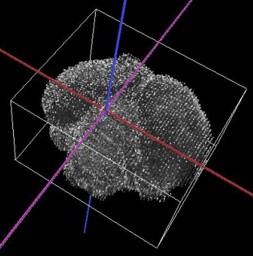
Figure 4. 3D visualization of DTI data with significant background noise (left). 3D visualization of the corresponding MRI data (right).
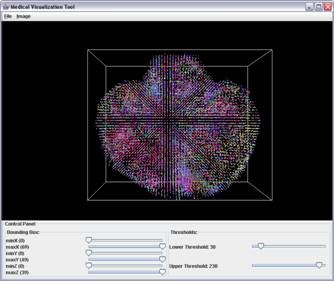
Figure 5. The visualization of relevant portion of DTI data with background noise after DTI and MRI integration and the use of MRI as a 3D mask.
Professor Kenneth Watkin
Medical Imaging Research Laboratory, College of Applied Health Science and Beckman Institute, Bioimaging Science and TechnologyProfessor Peter Bajcsy
Research group ISDA, National Center for Supercomputing Applications, UIUCShadi Ashnai
Computer Science Department, ISDA, National Center for Supercomputing Applications, UIUC
References:
High Resolution 3D Diffusion Tensor Microscopy of the Oscine Brain.
K.L. Watkin, L. Ciobanu, S. London, B.P. Sutton, and P. Bajcsy,
47th Experimental Nuclear Magnetic Resonance Conference; Biochemical and Clinical Applications - poster
April 23-28, 2006, The Asilomar Conference Center, Pacific Grove, CA
High Resolution MRI Microscopic Neuro-Imaging Studies and Voice Disorders.
K.L. Watkin, L. Ciobanu, P. Bajcsy and S. London,
7th International Conference Advances in Quantitative Laryngology, Voice and Speech Research,
University Medical Center Groningen, the Netherlands, 6-7 October, 2006
(final program |
abstract pdf | full ppt 5.7MB)





